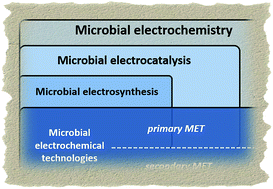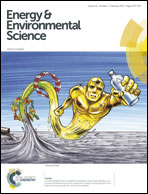Microbial electrochemistry and technology: terminology and classification
Abstract
Microbial electrochemistry is the study and application of interactions between living microbial cells and electrodes (i.e. electron conductors, capacitive materials). For a long time this subfield of bioelectrochemistry has been the interest of mainly fundamental researchers. This has considerably changed during the last decade and microbial electrochemistry gained interest from applied researchers and engineers. These researchers took the microbial fuel cell (MFC), which is a system that converts the chemical energy of organic material in wastewater into electric power, from a concept to a technology. In addition, a plethora of derivative technologies, such as microbial electrolysis cells (MECs), microbial desalination cells (MDCs), photomicrobial fuel cells (photoMFCs), microbial electrosynthesis (MES), and biocomputing have been developed. The growing number of systems is often referred to in literature under the termini bioelectrochemical system (BES), microbial electrochemical technology (MET), or electrobiotechnology. Within this article we introduce a classification of technologies based on interfacing microbiology and electrochemistry. We argue that BESs comprise all systems based on bioelectrochemistry, with a further layer of termini through the use of METs. Primary METs are based on extracellular electron transfer (direct or mediated), whereas secondary METs include systems in which electrochemistry is connected – at least through ionic contact – with a microbial process via the electrochemical control or adaptation of environmental parameters, such as pH or metabolite concentration level.


 Please wait while we load your content...
Please wait while we load your content...